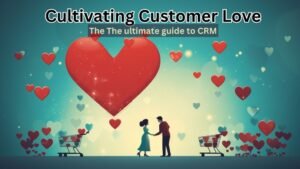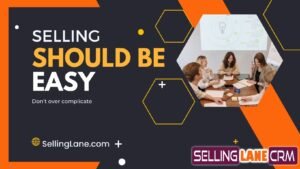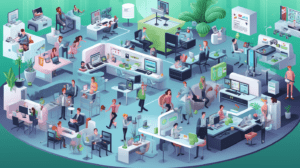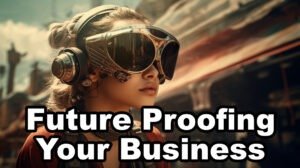Cultivating Customer Love: The Ultimate Guide to CRM Magic!

Ah, relationships. As the great Jane Austen once quipped, “It is a truth universally acknowledged, that a single business in possession of good customers, must be in want of a CRM.” Okay, maybe she didn’t say exactly that, but if she were a 21st-century business guru, she totally would have! So, let discover how it can sprinkle some pixie dust on your customer relationships with this ultimate guide to CRM.
Here are the 5 Reasons CRM’s Work So Well.
1. Always Remembering… Everything!
“The Digital Diary of Delight: SaaS CRM’s Memory Magic!”
Every interaction with our customers count, so, forgetting a detail can be a cardinal sin. But fret not, for the SaaS CRM is here to be your memory’s knight in shining armor! With this digital marvel, gone are the days when you’d scramble through notes trying to recall if it’s Mr. Thompson’s birthday or if Mrs. Rodriguez mentioned her cat’s affinity for gourmet fish. 🐱🐟
With a SaaS CRM by your side, every tidbit about your customer is stored with precision (so long as you log it). Be it Anna’s birthday bash coming up next week, the fact that Robert adores his golden retriever named Buddy, or that Sarah has a soft spot for emails peppered with fun emojis – everything is at your fingertips. 🎂🐶😊
In SellingLane CRM, we have a feature on both the customer screen and the business info screen called “Customer Insight” and “Business insight” respectfully. The idea is that you could review your about to contact a customer or business, and be reminded of such things as “he has a dog named Komer.” or “He loves sushi.” or “don’t call him Tony, he likes to be called Anthony”
For the “Business insight” it might be used for “They have 100 employees, specializes in steel fabrication” or “Always call on Tuesdays because owner is golfing,” This way, at a glance, you could get some basic insight into the customer.
Oscar Wilde, with his razor-sharp wit, once remarked, “Memory is the diary we all carry about with us.” But one might ponder: why burden our minds with the weight of countless memories when a sleek, easy CRM can carry that diary for us? After all, in the triage ward of business, it’s always best to have a partner that remembers everything like a memory 🐘 elephant!
2. Being There, Without Actually Being There
Businesses often cater to clients from diverse geographies, but the essence of success remains in building and maintaining strong relationships. A SaaS CRM blurs geographical boundaries. Regardless of where your customers are, you can engage with them as if they’re right next door. This digital proximity ensures you’re always in sync with their needs and feedback. Imagine having a virtual coffee chat with a client in Tokyo while you’re in New York. As Mark Twain might humorously point out, “The lack of presence makes the heart grow fonder, especially if you’re always a click away.” While physical distances persist, emotional and business connections are stronger than ever, ensuring every client feels valued and prioritized.
3. Predicting the Future (Sort of)
With great data, you can often anticipate your customers’ needs before they even realize them. It’s like having a crystal ball, but without the foggy ambiguities. As Yogi Berra (I wish I met him) might have chuckled, “It’s tough to make predictions, especially about the future. But with a great system, it’s a tad easier!”
Harnessing the power of data analytics allows you to delve deep into your customers’ behaviors, preferences, and patterns. This proactive approach means you’re not just reacting to their needs; you’re predicting them. By analyzing past interactions, purchase histories, and even browsing habits, you can tailor your offerings and communications to perfectly suit each customer. It’s the modern-day equivalent of reading tea leaves, but with precision and accuracy. Yogi Berra, with his signature wit, once quipped, “It’s tough to make predictions, especially about the future.” Yet, with a robust CRM system in place, you’re not just predicting—you’re preparing. So, while we might not have a magic wand or a mystical orb, with the right tools, we can certainly come close!
4. A Guide to CRM ‘s Ability to Automating the Mundane

Let’s face it, no one likes repetitive tasks. With automation features, your CRM takes care of the mundane, leaving you free to focus on the fun stuff. BECAUSE, “Life is too short for manual data entry.”
Repetitive tasks can be the bane of productivity. They eat uptime, drain energy, and often lead to errors simply because of the monotony they bring. Enter the automation features of a CRM. These features are designed to shoulder the burden of those tedious tasks that seem to crop up daily. From sending follow-up emails to updating records, the CRM ensures that consistency is maintained without you lifting a finger. This not only streamlines operations but also reduces the risk of human error. Imagine the hours you can reclaim, redirecting your focus to more strategic, creative endeavors that truly drive business growth. Albert Einstein, with his brilliant mind and playful spirit, once said, “Imagination is more important than knowledge.” And while he might not have specifically mentioned manual data entry, it’s easy to imagine him advocating for any tool that frees up mental space for more imaginative pursuits. So, let your CRM handle the routine, and you can dive into the innovative, exciting aspects of your business.
5. CRM’s Build Trust, One Keystroke at a Time
My father, a wise man with years of experience under his belt, often echoed the sentiment, “Trust is currency.” It wasn’t just a saying; it was a philosophy he lived by. In the world of business, trust isn’t just handed over; it’s earned, transaction by transaction, interaction by interaction. This is where a SaaS CRM becomes invaluable.
By harnessing the power of cloud technology, a SaaS CRM meticulously records every touchpoint, every preference, and every past interaction with your customers. This isn’t just about data collection; it’s about understanding. When you reach out to a customer with information tailored specifically to their needs or preferences, it sends a clear message: “We’re listening. We care.”
Such personalized interactions, be it through marketing campaigns, sales pitches, or customer service, foster a sense of trust. They show your customers that they’re not just another number in a database, but valued individuals. Over time, this trust compounds, solidifying relationships and ensuring loyalty.
In an age where customers are bombarded with generic advertisements and impersonal sales pitches, standing out requires a personal touch. And with a SaaS CRM, you’re not just reaching out; you’re reaching out in the right way, at the right time, with the right message. Just as my father believed, trust truly is a currency, and with a SaaS CRM, you’re making a wise investment in that trust.
The Grand Finale: Why Selling Lane?
Now, you might be thinking, “All this sounds great, but where do I start?” Enter Selling Lane. It’s not just any SaaS CRM; it’s your business’s new best friend. With features tailored for modern businesses, it’s the secret sauce to jazz up your customer relationships.
So, in the immortal words of Dr. Seuss, “Sometimes the questions are complicated, and the answers are simple.” If the question is how to improve customer relationships, the answer, dear reader, is Selling Lane.
Ready to give your customer relationships a sprinkle of magic? ✨ Hop on the Selling Lane express and watch the transformation unfold!
























